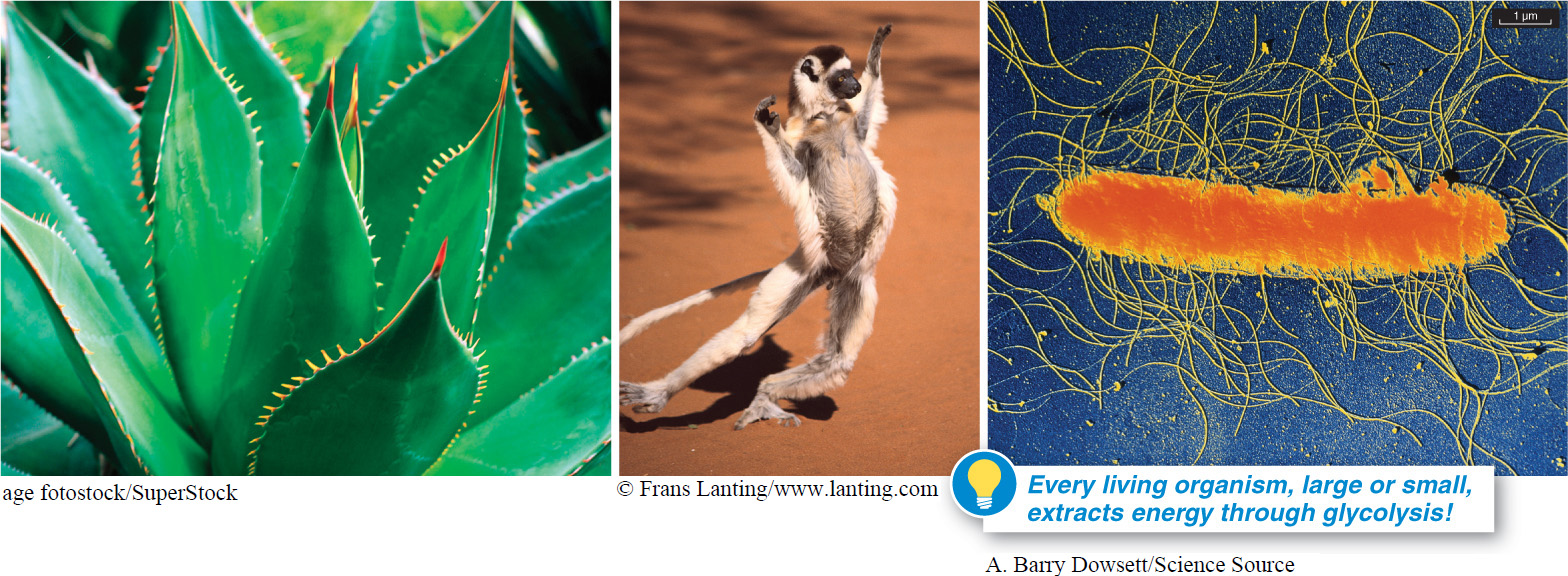To generate energy, fuels such as glucose and other carbohydrates, as well as proteins and fats, are broken down in three steps: (1) glycolysis, (2) the Krebs cycle, and (3) the electron transport chain. Glycolysis means the splitting (lysis) of sugar (glyco-

As FIGURE 4-30 illustrates, glycolysis is a sequence of chemical reactions (there are 10 in all) through which glucose is broken down, resulting in two molecules of a substance called pyruvate. Glycolysis has two distinct phases: an “uphill” preparatory phase and a “downhill” payoff phase.

Just as you sometimes have to spend money to make money, before any energy can be extracted from glucose, some energy must be added to the molecule. This addition occurs during the “uphill” phase. The additional energy (which comes from ATP) destabilizes the glucose molecule, making it ripe for chemical breakdown. Once the glucose can be broken down chemically, the “payoff phase” begins as energy stored in its bonds can be harnessed as the bonds are broken.
159
Three of the 10 steps in glycolysis yield energy. In two of these three steps, as bonds in the sugar are broken and other, lower-
Glycolysis can proceed regardless of whether any oxygen is present. When oxygen is present, glycolysis isn’t the end of the story. But in the absence of oxygen and in many yeasts and bacteria, glycolysis is the only game in town for fueling activity. Because single-
TAKE-HOME MESSAGE 4.13
Glycolysis is the initial phase in the process by which all living organisms harness energy from food molecules. Glycolysis occurs in a cell’s cytoplasm and uses the energy released from breaking chemical bonds in food molecules to produce high-
What molecules are formed during glycolysis?
During glycolysis, glucose is broken down into two pyruvate molecules. Energy is captured and stored in the high-energy molecules ATP and NADH.
160